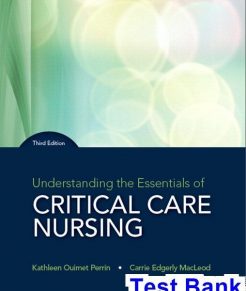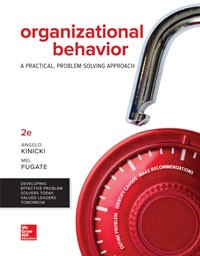Description
ISBN-10: 0781765773
ISBN-13: 9780781765770 978-0781765770
1. The substance that fills the cell from the plasma membrane to the nuclear membrane is called the ____________.
2. A long, whiplike projection from the cell used in locomotion is a(n) ______________.
3. Small hairlike projections from the cell are called ___________.
4. The organelle that contains digestive enzymes is the ____________.
5. The large organelle that is the control center of the cell is the ___________.
6. In the pairing of bases in DNA, adenine pairs with __________.
7. The substance that makes up the genes is ________________.
8. In the pairing of bases in RNA, adenine pairs with ___________.
9. The type of RNA that carries amino acids to the ribosome is __________.
10. The process of synthesizing proteins based on an mRNA template is called ____________.
11. The period between one cell division and the next is called ________.
12. The process by which specialized cells engulf large particles is _____________.
13. The diffusion of water through a semipermeable membrane is ______________.
14. Passage of a solution through a membrane under mechanical force is called ___________.
15. A solution that has a lower concentration than the fluid within the cell is termed ___________.
16. A cell placed in a _______________ solution will swell.
17. The percentage salt in a normal saline solution is _____________.
18. A change in the genetic material of a cell is called a(n) ______________.
19. A personal characteristic or lifestyle habit that increases one’s chances of getting cancer is called a(n) ______________.
20. A prefix meaning same is ________.
21. The metric unit used for microscopic measurement is the
A) meter
B) micrometer
C) centimeter
D) kilometer
22. The microscope with the highest magnification is the
A) scanning electron microscope
B) transmission electron microscope
C) compound light microscope
D) simple light microscope
23. The plasma membrane is best described as
A) solid
B) permeable
C) selectively permeable
D) hypotonic
24. The major lipids in the plasma membrane are
A) proteins and phospholipids
B) carbohydrates and proteins
C) phospholipids and cholesterol
D) calcium salts and phospholipids
25. Which of the following membrane proteins changes shape to move substances across the plasma membrane?
A) channel
B) receptor
C) enzyme
D) transporter
26. Which of the following membrane proteins attaches cells to other cells?
A) channel
B) linker
C) cell identity marker
D) transporter
27. The small body in the nucleus that assembles ribosomes is called the
A) nucleolus
B) mitochondrion
C) centriole
D) endoplasmic reticulum
28. An organelle that produces energy for the cell is called a(n)
A) ribosome
B) mitochondrion
C) Golgi apparatus
D) nucleolus
29. Small bodies involved in the manufacture of proteins are
A) ribosomes
B) nucleoli
C) mitochondria
D) centrioles
30. If a cell lacked centrioles, it would not be able to
A) synthesize proteins
B) synthesize RNA
C) divide
D) secrete proteins
31. A particular cell type specializes in breaking down harmful by-products of metabolism. This cell type would contain very high levels of
A) lysosomes
B) endoplasmic reticulum
C) centrioles
D) peroxisomes
32. Two cells vary in the amount of energy they require. One cell, a muscle cell, must generate large supplies of ATP. The other cell, a skin cell, requires very little ATP. Based solely on information provided in this question, these two cells would differ in the abundance of
A) mitochondria
B) lysosomes
C) vesicles
D) Golgi apparatus
33. A nucleotide contains a nitrogen base, a sugar unit, and a
A) phosphate unit
B) glycerol
C) fatty acid
D) protein unit
34. The RNA found in ribosomes is called
A) rRNA
B) mRNA
C) tRNA
D) sRNA
35. Ribosomes participate in the process of
A) DNA synthesis
B) transcription
C) translation
D) mutation
36. Transcription is the synthesis of
A) RNA
B) protein
C) lipids
D) carbohydrates
37. The correct order of the stages in mitosis is
A) anaphase, telophase, metaphase, prophase
B) prophase, metaphase, anaphase, telophase
C) prophase, anaphase, telophase, metaphase
D) telophase, anaphase, prophase, metaphase
38. The phase of mitosis when the chromosomes pull apart is
A) interphase
B) telophase
C) anaphase
D) metaphase
39. The phase of mitosis during which the chromosomes condense is
A) anaphase
B) prophase
C) metaphase
D) interphase
40. Droplets of fluid are taken in by the cell using the process of
A) diffusion
B) pinocytosis
C) exocytosis
D) active transport
41. What effect does diffusion usually have on the concentration gradient?
A) increase
B) decrease
C) no change
D) None of the answers are correct.







Reviews
There are no reviews yet.